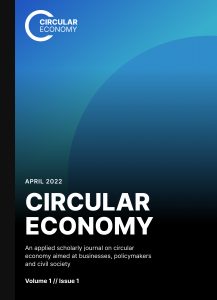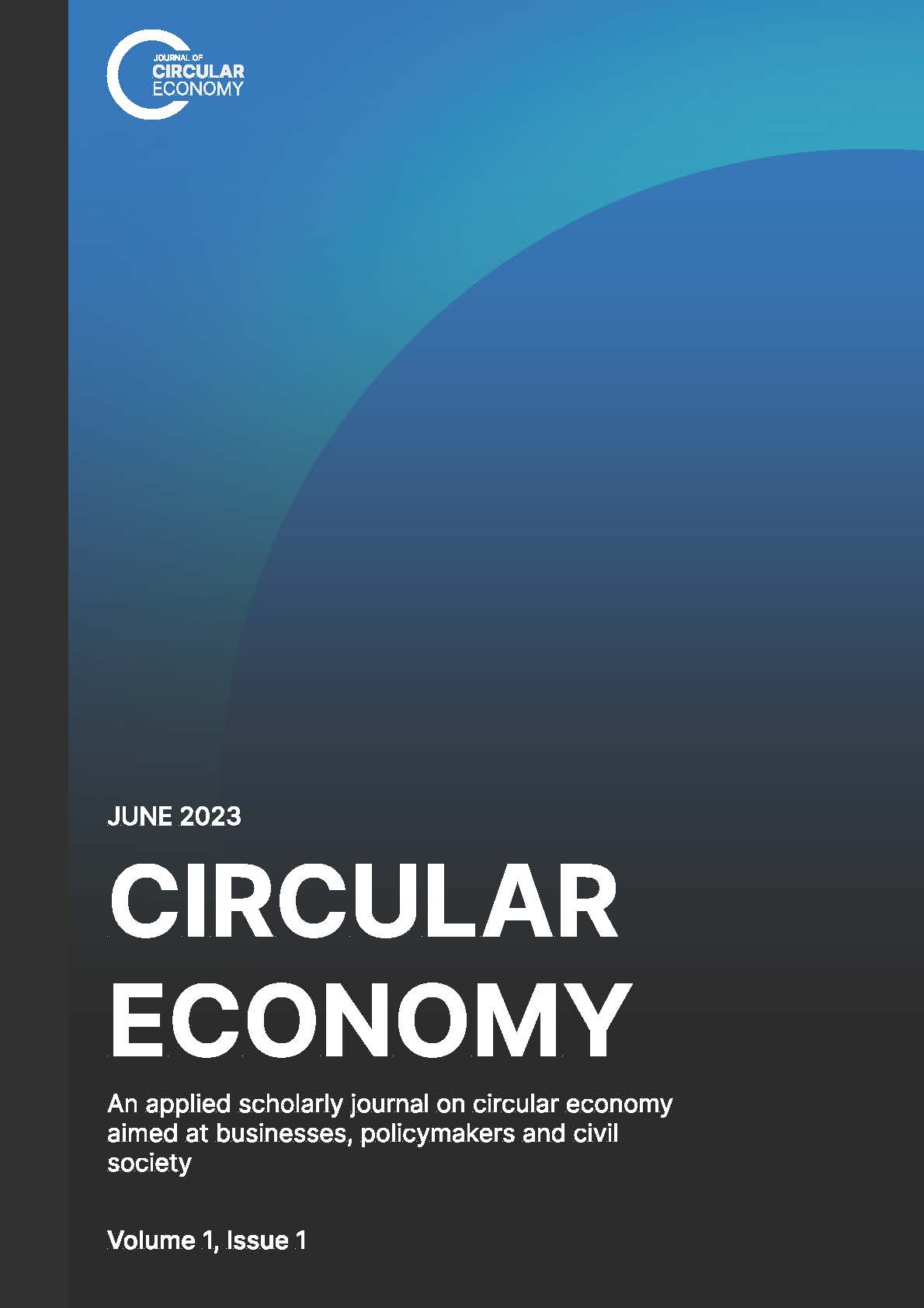Abstract
Keywords
References
Ansari, Z. N., Kant, R. and Shankar, R. (2020), “Remanufacturing supply chain: an analysis of performance indicator areas”, International Journal of Productivity and Performance Management, Vol. 71, No. 1, pp. 25–57.
APICS (2022), Introduction to Processes [Online]. Available at https://scor.ascm.org/processes/introduction (Accessed 21 April 2022).
Azevedo, S. G., Pimentel, C. M. O., Alves, A. C. and Matias, J. C. O. (2021), “Support of Advanced Technologies in Supply Chain Processes and Sustainability Impact”, Applied Sciences, Vol. 11, No. 7, p. 3026.
Batista, L., Bourlakis, M., Smart, P. and Maull, R. (2018), “In search of a circular supply chain archetype – a content-analysis-based literature review”, Production Planning & Control, Vol. 29, No. 6, pp. 438–451.
Blum, N. U., Haupt, M. and Bening, C. R. (2020), “Why “Circular” doesn’t always mean “Sustainable””, Resources, Conservation and Recycling, Vol. 162, p. 105042.
Braun, G., Som, C., Schmutz, M. and Hischier, R. (2021), “Environmental Consequences of Closing the Textile Loop—Life Cycle Assessment of a Circular Polyester Jacket”, Applied Sciences, Vol. 11, No. 7, p. 2964.
Burlakovs, J., Jani, Y., Kriipsalu, M., Vincevica-Gaile, Z., Kaczala, F., Celma, G., Ozola, R., Rozina, L., Rudovica, V., Hogland, M., Viksna, A., Pehme, K.-M., Hogland, W. and Klavins, M. (2018), “On the way to ‘zero waste’ management: Recovery potential of elements, including rare earth elements, from fine fraction of waste”, Journal of Cleaner Production, Vol. 186, pp. 81–90.
Calzolari, T., Genovese, A. and Brint, A. (2022), “Circular Economy indicators for supply chains: A systematic literature review”, Environmental and Sustainability Indicators, Vol. 13, p. 100160.
Chaouni Benabdellah, A., Zekhnini, K. and Cherrafi, A. (2021), “Sustainable and Resilience Improvement Through the Design for Circular Digital Supply Chain”, in Dolgui, A., Bernard, A., Lemoine, D., Cieminski, G. von and Romero, D. (Eds), Advances in Production Management Systems. Artificial Intelligence for Sustainable and Resilient Production Systems, Springer International Publishing, Cham, pp. 550–559.
Eccles, R. G. (1991), “The performance measurement manifesto”, Harvard Business Review, Vol. 69, No. 1, pp. 131–137.
Elgazzar, S., Tipi, N. and Jones, G. (2019), “Key characteristics for designing a supply chain performance measurement system”, International Journal of Productivity and Performance Management, Vol. 68, No. 2, pp. 296–318.
EMA Foundation (2015), Towards a circular economy: business rationale for an accelerated transition [Online]. Available at https://www.ellenmacarthurfoundation.org/publications/ towards-a-circular-economy-business-rationale-for-an-accelerated-transition (Accessed 06.07.20).
Esmaeilian, B., Sarkis, J., Lewis, K. and Behdad, S. (2020), “Blockchain for the future of sustainable supply chain management in Industry 4.0”, Resources, Conservation and Recycling, Vol. 163, p. 105064.
Farooque, M., Zhang, A., Liu, Y. and Hartley, J. L. (2022), “Circular supply chain management: Performance outcomes and the role of eco-industrial parks in China”, Transportation Research Part E: Logistics and Transportation Review, Vol. 157, p. 102596.
Farooque, M., Zhang, A., Thürer, M., Qu, T. and Huisingh, D. (2019), “Circular supply chain management: A definition and structured literature review”, Journal of Cleaner Production, Vol. 228, pp. 882–900.
Grant, M. J. and Booth, A. (2009), “A typology of reviews: an analysis of 14 review types and associated methodologies”, Health information and libraries journal, Vol. 26, No. 2, pp. 91–108.
Hussain, M. and Malik, M. (2020), “Organizational enablers for circular economy in the context of sustainable supply chain management”, Journal of Cleaner Production, Vol. 256, p. 120375.
Kalmykova, Y., Sadagopan, M. and Rosado, L. (2018), “Circular economy – From review of theories and practices to development of implementation tools”, Resources, Conservation and Recycling, Vol. 135, pp. 190–201.
Kirchherr, J., Reike, D. and Hekkert, M. (2017), “Conceptualizing the circular economy: An analysis of 114 definitions”, Resources, Conservation and Recycling, Vol. 127, pp. 221–232.
Kravchenko, M., Pigosso, D. C. and McAloone, T. C. (2019), “Towards the ex-ante sustainability screening of circular economy initiatives in manufacturing companies: Consolidation of leading sustainability-related performance indicators”, Journal of Cleaner Production, Vol. 241, p. 118318.
Lanaras-Mamounis, G., Kipritsis, A., Tsalis, T. A., Vatalis, K. Ι. and Nikolaou, I. E. (2022), “A Framework for Assessing the Contribution of Firms to Circular Economy: a Triple-Level Approach”, Circular Economy and Sustainability.
Lengyel, P., Bai, A., Gabnai, Z., Mustafa, O. M. A., Balogh, P., Péter, E., Tóth-Kaszás, N. and Németh, K. (2021), “Development of the Concept of Circular Supply Chain Management—A Systematic Review”, Processes, Vol. 9, No. 10, p. 1740.
Lieder, M. and Rashid, A. (2016), “Towards circular economy implementation: a comprehensive review in context of manufacturing industry”, Journal of Cleaner Production, Vol. 115, pp. 36–51.
Maestrini, V., Luzzini, D., Maccarrone, P. and Caniato, F. (2017), “Supply chain performance measurement systems: A systematic review and research agenda”, International Journal of Production Economics, Vol. 183, pp. 299–315.
McCormack, K., Bronzo Ladeira, M. and Paulo Valadares de Oliveira, M. (2008), “Supply chain maturity and performance in Brazil”, Supply Chain Management: An International Journal, Vol. 13, No. 4, pp. 272–282.
Mentzer, J. T., Witt, W. de, Keebler, J. S., Min, S., Nix, N. W., Smith, C. D. and Zacharia, Z. G. (2001), “DEFINING SUPPLY CHAIN MANAGEMENT”, Journal of Business Logistics, Vol. 22, No. 2, pp. 1–25.
Montag, L. (2022), “Circular Economy and Supply Chains: Definitions, Conceptualizations, and Research Agenda of the Circular Supply Chain Framework”, Circular Economy and Sustainability, https://doi.org/10.1007/s43615-022-00172-y.
Nattassha, R., Handayati, Y. and Simatupang, T. M. (2020), “Linear and circular supply chain: SCOR framework stages, actor analysis and the illustrative case of cassava farming”, International Journal of Business and Globalisation, Vol. 26, 1/2, pp. 3–23.
Saberi, S., Kouhizadeh, M., Sarkis, J. and Shen, L. (2018), “Blockchain technology and its relationships to sustainable supply chain management”, International Journal of Production Research, Vol. 57, No. 7, pp. 2117–2135.
Saroha, M., Garg, D. and Luthra, S. (2021), “Analyzing the circular supply chain management performance measurement framework: the modified balanced scorecard technique”, International Journal of System Assurance Engineering and Management.
Sehnem, S., Vazquez-Brust, D., Pereira, S. C. F. and Campos, L. M. (2019), “Circular economy: benefits, impacts and overlapping”, Supply Chain Management: An International Journal, Vol. 24, No. 6, pp. 784–804.
Vegter, D., van Hillegersberg, J. and Olthaar, M. (2020), “Supply chains in circular business models: processes and performance objectives”, Resources, Conservation and Recycling, Vol. 162, p. 105046.
Vegter, D., van Hillegersberg, J. and Olthaar, M. (2021), “Performance Measurement Systems for Circular Supply Chain Management: Current State of Development”, Sustainability, Vol. 13, No. 21, p. 12082.
Walker, A. M., Opferkuch, K., Roos Lindgreen, E., Simboli, A., Vermeulen, W. J. and Raggi, A. (2021), “Assessing the social sustainability of circular economy practices: Industry perspectives from Italy and the Netherlands”, Sustainable Production and Consumption, Vol. 27, pp. 831–844.


